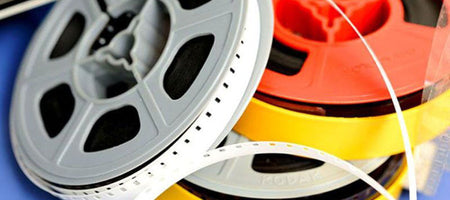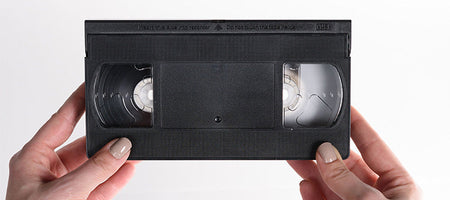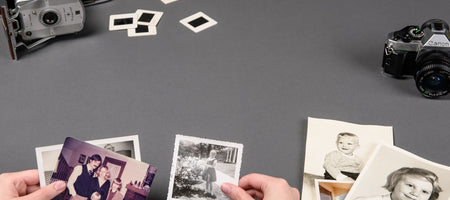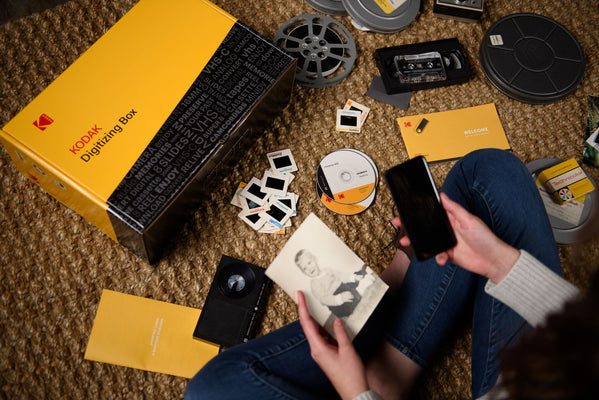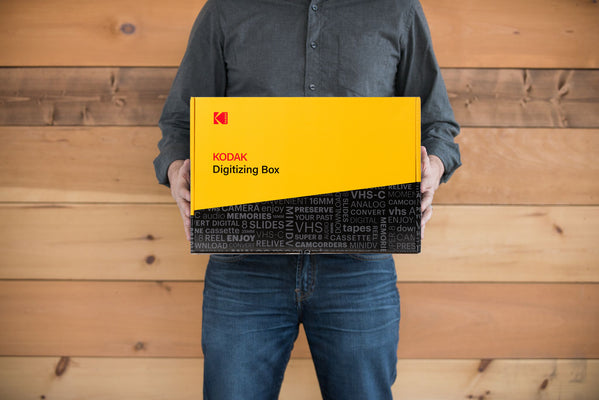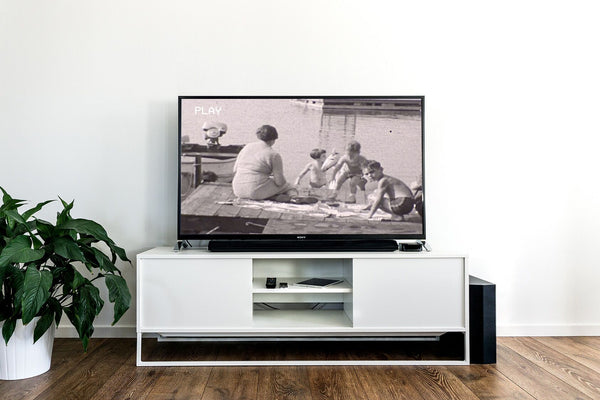It’s your mom’s 60th birthday today, and you want to relive highlights from last decade. You go digging through piles of old VHS tapes, trying to find the treasure-like footage of Mama celebrating her 50th at a disco-themed roller rink. Hours after rummaging stacks of clunky tapes, squinting to read each faded sticker label, you finally find it — Aha! Ecstatic, you run to the seemingly ancient VCR player and gather the whole family around for a grand reveal.
But, when you insert the tape, all that comes to the screen is gritty black and white static. You try rewinding or fast-forwarding. Nada. One of your favorite videos of Mom drunkenly dancing in electric lime four-wheel shoes is gone, land-locked in a world of irreparable video decay.
What happened?
An average videotapes lifespan is only 30 years. The older you tape gets, the more likely it is to be affected by scratching or mold. This puts tapes at much greater risk for poor picture quality.
Anatomy of a VHS
VHS, SVHS, VHS-C and Hi 8 video tapes consist of three layers: the magnetic layer, the substrate and the backing. Naturally some tapes will be a bit different based on where they are made, but in general, the overall framework is consistent.
The magnetic layer is comprised of magnetic particles held together with a polymer binder. This is the layer that communicates with the drum and rotating heads of your VCR. It stores the film’s information, as well as a lubricant that helps the playback heads turn smoothly and efficiently resulting in better viewing quality.
The substrate and backing layers are there to guard the magnetic recording layer. The magnetic recording layer is thin and fragile. The backing and substrate team up to protect it, ease friction, cut down on static charge, and do away with image distortion.
What can go wrong?
- Mold. That special edition of Aladdin might just be Mr. Mold’s version of a celebrity’s dream vacation home in Malibu. If you spy white powdery residue lining the tape, it could be itty bitty mold destroying your favorite magic carpet ride scene. It might even be a prime suspect for what ruined Mom’s roller rink classic. Thankfully, you might be able to clean it (hint: professionally), but if it accumulates to a thick lining, there’s little hope.
- Warping. Extreme or fluctuating temperatures can cause serious damage to the magnetic ribbon in your VHS. Beyond a certain point, the ribbon gets so warped it refuses to play smoothly. Humidity is also the worst. If you store your tapes in a damp closet, you can say goodbye to the only recordings of your wedding vows and baby’s first words.
- Housing Jams. Remember the beating you gave your videos over the years? Well, it’s likely that even all these years later, there is significant damage in the housing mechanism. This can ruin the VCR as well. Oops!
- The lubricant disappears. When lubricant stored in the binder layer of the tape runs out, the binder layer obviously undergoes rougher friction, eventually erasing all data on the tape.
- Tape Breaks. Rewinding and fast-forwarding takes a toll on a VHS tape, eventually causing it to come apart from the housing case. Over time, you may not be able to rewind or fast-forward at all.
- Shredding. A combination of humidity, temperature changes, and wear and tear can literally shred your VHS. And once this happens, there’s no looking back. It’s destroyed forever.
- Stretching. When a tape’s backing and substrate stretch from multiple rewinding’s and playback, tracking errors can occur. Too many tracking problems dramatically reduces quality, and eventually makes such a mess of your tape that the video becomes totally un-watch-able.
- Time. You can’t escape the ticking clock. Although there’s no expiration date on VHS films, it’s clear they won’t last forever. Studies show that even well-stored tapes you’ve only watched once will experience up to 20 percent signal loss over a 10 to 25-year period. Over time, a great deal of information will be irretrievably lost, without any real cause.
What can I do?
- Dodge the humidity. One of the worst things you can do for your tapes is storing them in damp, humid places. I know the basement and the attic can be the most convenient storage areas in your home, but they can also dangerous for your precious memories. A dry area, with a steady temperature at around 62 degrees is a best practice for storing tapes.
- Amp up your storage. Keep your VHS tapes out of harm’s way! If you can find a secure area to store your tapes there is a lesser chance that they could get scratched or stepped on.
- Digitize. Another great idea for having your memories around for years to come is digitizing! How? Send your tapes to in to us at Kodak Digitizing, and in a short time your originals will arrive back safe and sound along with your new digital version!
Hopefully with these tips and proactive steps, the next time you hope to share your favorite home videos, things will go a bit more smoothly!

